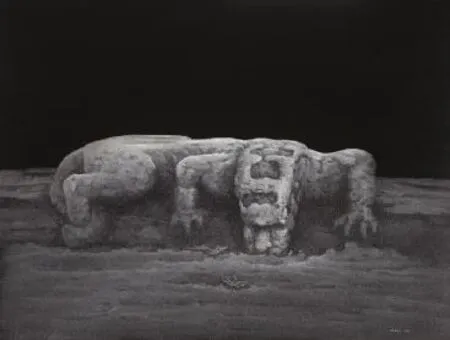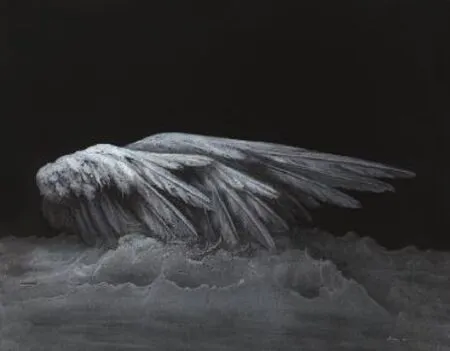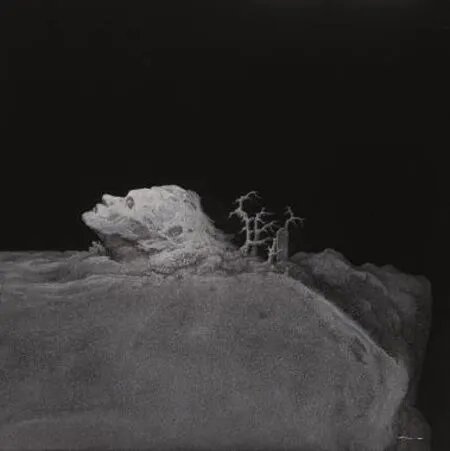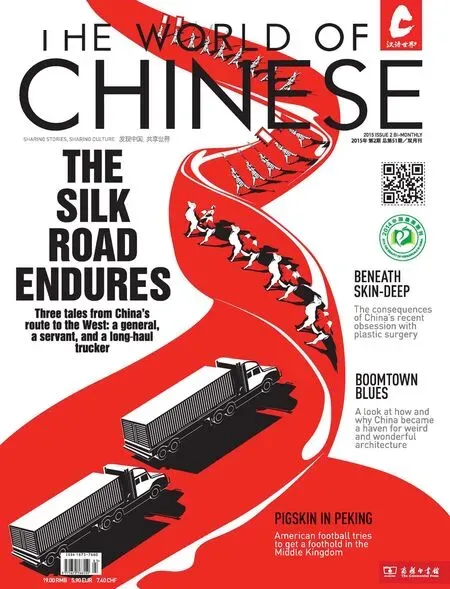THE GREAT CHILL
2015-01-18
THE GREAT CHILL

The Soundless Wave, 2014
ln 2013, Liu Jiahua (刘家华) was quite representative of the Beijing art scene. Born in 1979 and educated at the Sichuan Academy of Fine Arts, Liu began his career in Beijing in a factory-turned-studio in the Heiqiao Art Zone in 2010. Liu has remarkable intuition concerning what the market wants, something he has never tried to hide. “2012 and 2013 were my busiest years,” he says. “I held three personal exhibitions each year. That’s a lot for an artist—a lot of hustle and bustle for one to feel lost in.” The themes he dealt with in that period were explicit: collapse, destruction, a society alienated from tradition. His works featured easily understood social messages and a riot of colors and skills. His work, as he says, is explicit and sometimes loud.
In 2014, Liu abandoned the style that had made him successful for so long. The exhibitions and commercial success seemed to have exhausted his interest in the vanity fair of art. “My old style was highly accessible to the audience,” he says. “But it’s no longer what I want.”Very abruptly, the vehicles that were once his favorite—bright, riotous colors, distinctly Chinese elements, and apparent cultural messages—were discarded, something that surprised his agencies and curators. “All these exterior things are obstacles,” Liu says. “The paintingscan better convey the soul only when I get rid of them.”




(Top Left) A Sip from the River, 2014 (Middle left) A Wordless Gravestone, 2014 (Bottom Left) Kun, 2014 (Right) The Dune, 2014
A new style emerged in his latest series, “The Great Chill” (《大寒》). One can still vaguely recognize Liu in the works’ fxation on collapse and destruction on a massive scale. However, instead of displaying it in a dramatic, fashy way, “The Great Chill” is gloomy, desperate, and otherworldly. It is almost colorless, and he even abandons the use of lines in most paintings by using a special, time-consuming technique of sprinkling the work with chalk-colored dots to give it a hazy, age-worn look. The elements he employs have become random—sometimes an ancient statue, sometimes the myth of Zhuangzi, or perhaps just an ordinary face. But all these forms are stripped of their old connotations and speak of something strictly Liu Jiahua.
Sometimes the new soul in his works baffes him as well. Liu has a hard time naming each of his paintings, as if he needs time to catch up with his new, unnamed ego. “This is my soul, and I have come to believe that an artist’s ultimate mission is to look deep down into his soul,” he says.– GlNGER HUANG (黄原竟)
